A changing consumer story in India
I created a Medium Series just to play with their new feature, that ended up going a bit viral and getting featured by them. Medium Series are only viewable in their app, unfortunately, so here it is, as a simple web page.
Non-resident lenses
I’m back in India for a bit after a few years, and find myself noticing changes to the marketing spiel employed by brands and the behavior of consumers. Here are a few anecdotes, that I’ll keep updating as I find more. Follow along!
Wallets everywhere
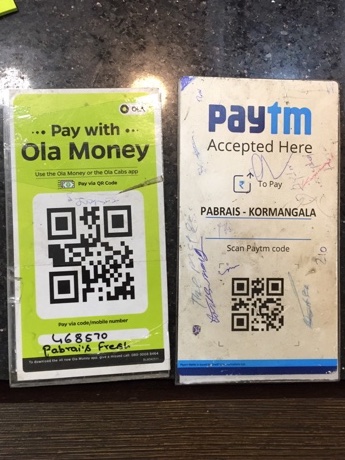
“Wallets” are payment apps like Venmo or PayPal. EVERYONE is using these, even road-side vendors. Credit cards have been leap-frogged. There also seems to be a Zawinski’s Law equivalent for building wallet apps.
Oh, and QR codes! Who knew they’d still be around.
Selfies everywhere
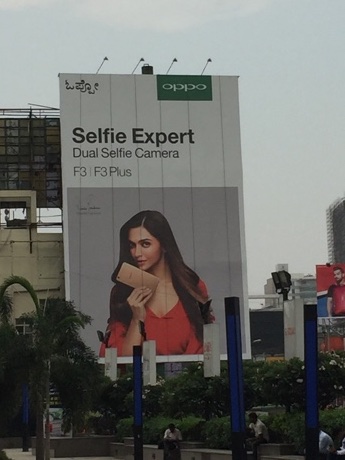
Everyone is doing selfies. Selfies are doing marketers.
(I have no clue what a dual-selfie is)
(This is an ad for a smartphone. These giant billboards were plastered all over in the two cities I’ve visited this time.)
I contain multitudes
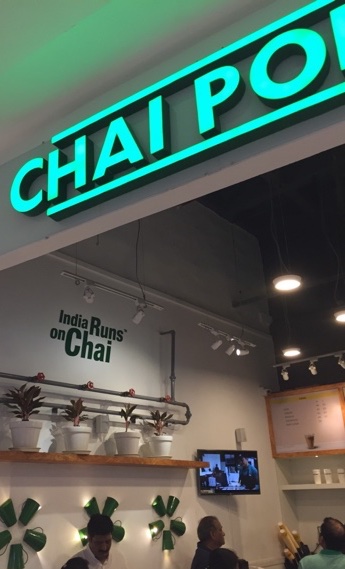
Anyone who thinks of India as a SINGLE market of a BILLION people is up for severe disappointment.
Chai and Cricket are the only two things that string the entire population. And both are getting repackaged (Chai Point and the Indian Premier League).
Eclectic
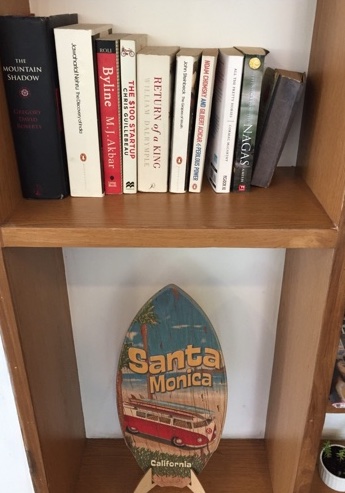
Seen at an upscale coffeeshop: the mingling of California beach culture with books on Indian ethos and history (by both Indians and British), on startup culture, and some American literature.
This is urban India.
Big data everywhere
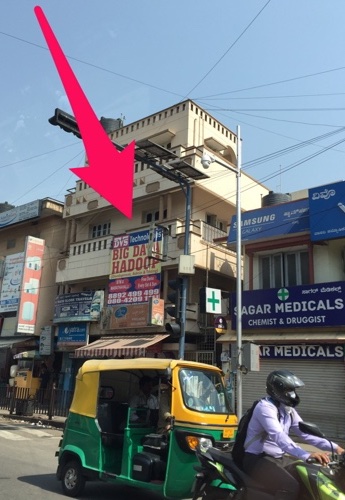
Someone aptly described big data as high school sex: “everyone talks about it, no one really knows what it’s like”. AI and IoT are not too far behind.
(I’m slightly cheating here as this isn’t strictly a consumer story. But the temptation to include it was hard to resist – such an apt representation of how tech is rapidly becoming ubiquitous)
Post-colonial
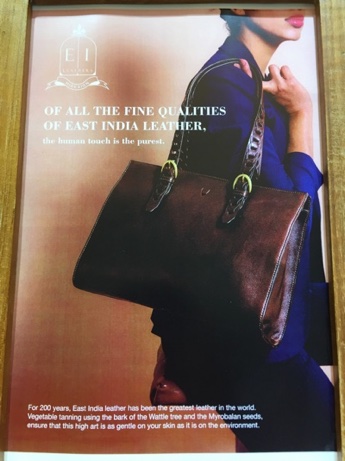
The East India Company led the British conquest of the Indian states. I find it very surprising and objectionable to see it in branding attempts at creating a sense of legacy or nostalgia.
SMS and OTP
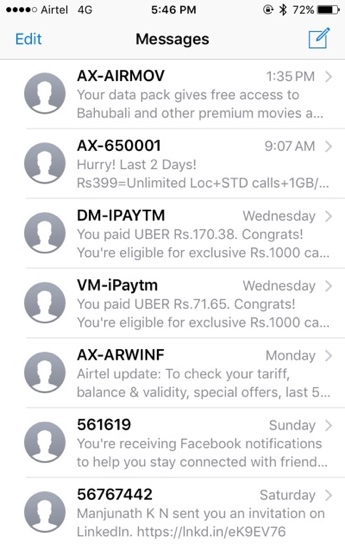
A mobile number is the only ID you’ll need. But so much spam (et tu, LinkedIn) and no spam filtering.
To use any online service, you need to 2FA with an OTP texted to you. Even cabs don’t start driving until you provide them an OTP!
I found it very alien and inconvenient, but slightly re-assuring (even though SMS isn’t fool-proof).
Google baba
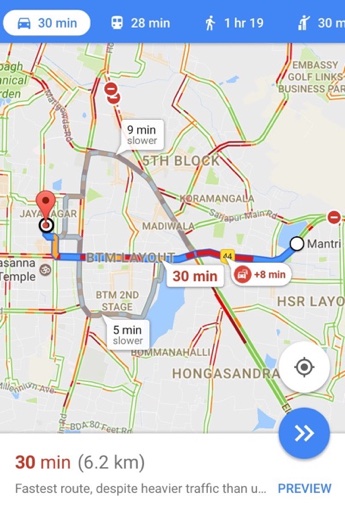
Extremely impressed with Google maps this time – travel times are accurate and it has reliably found the best route, to the surprise of seasoned city drivers. My skepticism about applying tech solutions to such problems in India is gone.
Saw people referring to Google as a “Baba” – a sage. Perhaps half jokingly, but only half.
What other structural pains can technology alleviate, if not solve?
Ministry of truth
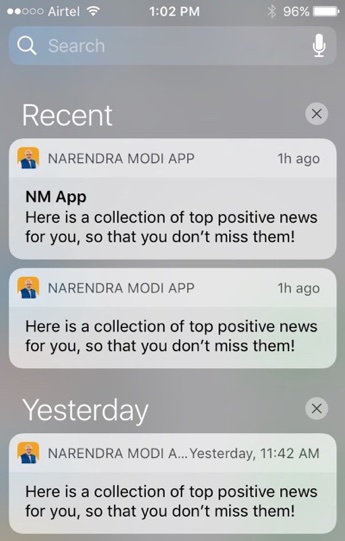
The Prime Minister has an app that pushes out “top positive news” multiple times a day. What could be wrong with that?
(p.s. that isn’t my phone)
Private commons
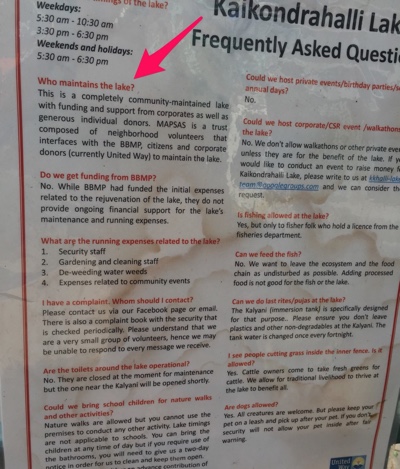
The city infrastructure is a mess. But this time I’m hearing many first-hand accounts of individuals and communities teaming up for civic improvement.
I’m not bullish on grassroots efforts scaling, nor on the probability of the city/state getting its act together. Hope they at least create frameworks and incentives for private groups to do more such work.
Branding 2.0
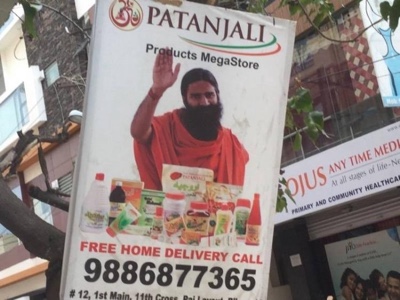
I’m most impressed with Patanjali as a new age brand. The guy is a marketer par excellence, selling a deadly combination of religion and politics (just not my kind).
I know people who will not buy Patanjali regardless of product quality. But brands today need to sell identity more than anything else. Didn’t see anyone else doing it.
Trust as a service
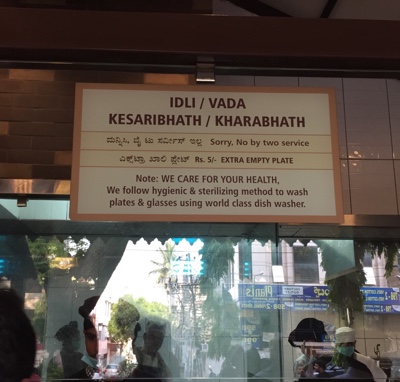
In an increasingly unreliable and profit-driven world, trust is the only thing that is scarce. With hole-in-the-wall food joints, hygiene is a scarce commodity and creates a gap.
The market is getting more efficient at providing consumers what they need.
Nostalgia
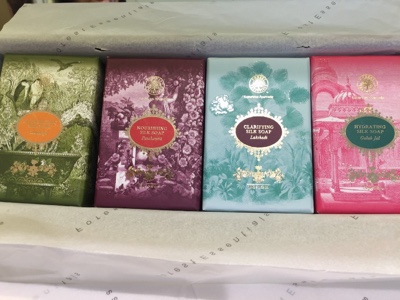
All said and done about modernity, nostalgia still reigns supreme when it comes to creating stories. The packaging of this (very expensive) soap resembles gorgeous Mughal-era art.